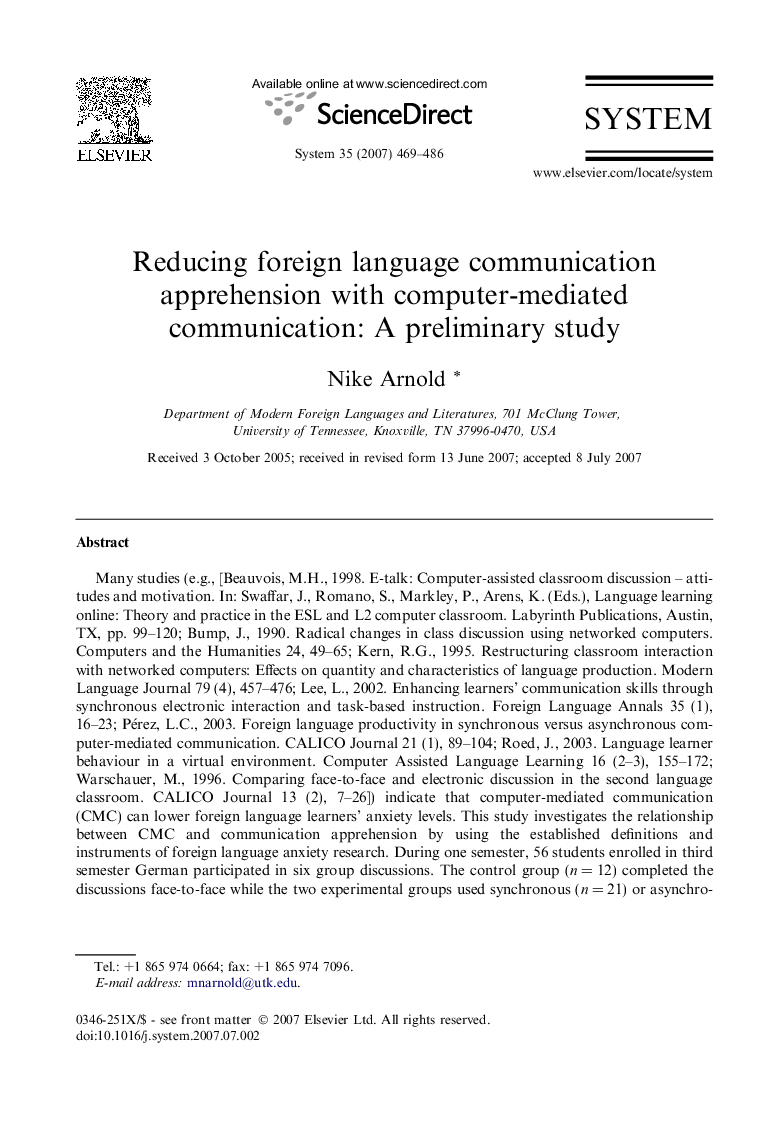| کد مقاله | کد نشریه | سال انتشار | مقاله انگلیسی | نسخه تمام متن |
|---|---|---|---|---|
| 373284 | 622296 | 2007 | 18 صفحه PDF | دانلود رایگان |

Many studies (e.g., [Beauvois, M.H., 1998. E-talk: Computer-assisted classroom discussion – attitudes and motivation. In: Swaffar, J., Romano, S., Markley, P., Arens, K. (Eds.), Language learning online: Theory and practice in the ESL and L2 computer classroom. Labyrinth Publications, Austin, TX, pp. 99–120; Bump, J., 1990. Radical changes in class discussion using networked computers. Computers and the Humanities 24, 49–65; Kern, R.G., 1995. Restructuring classroom interaction with networked computers: Effects on quantity and characteristics of language production. Modern Language Journal 79 (4), 457–476; Lee, L., 2002. Enhancing learners’ communication skills through synchronous electronic interaction and task-based instruction. Foreign Language Annals 35 (1), 16–23; Pérez, L.C., 2003. Foreign language productivity in synchronous versus asynchronous computer-mediated communication. CALICO Journal 21 (1), 89–104; Roed, J., 2003. Language learner behaviour in a virtual environment. Computer Assisted Language Learning 16 (2–3), 155–172; Warschauer, M., 1996. Comparing face-to-face and electronic discussion in the second language classroom. CALICO Journal 13 (2), 7–26]) indicate that computer-mediated communication (CMC) can lower foreign language learners’ anxiety levels. This study investigates the relationship between CMC and communication apprehension by using the established definitions and instruments of foreign language anxiety research. During one semester, 56 students enrolled in third semester German participated in six group discussions. The control group (n = 12) completed the discussions face-to-face while the two experimental groups used synchronous (n = 21) or asynchronous CMC (n = 23). Data from pretest and posttest questionnaires show no significant difference in reduction of communication apprehension between the control and experimental groups.
Journal: System - Volume 35, Issue 4, December 2007, Pages 469–486